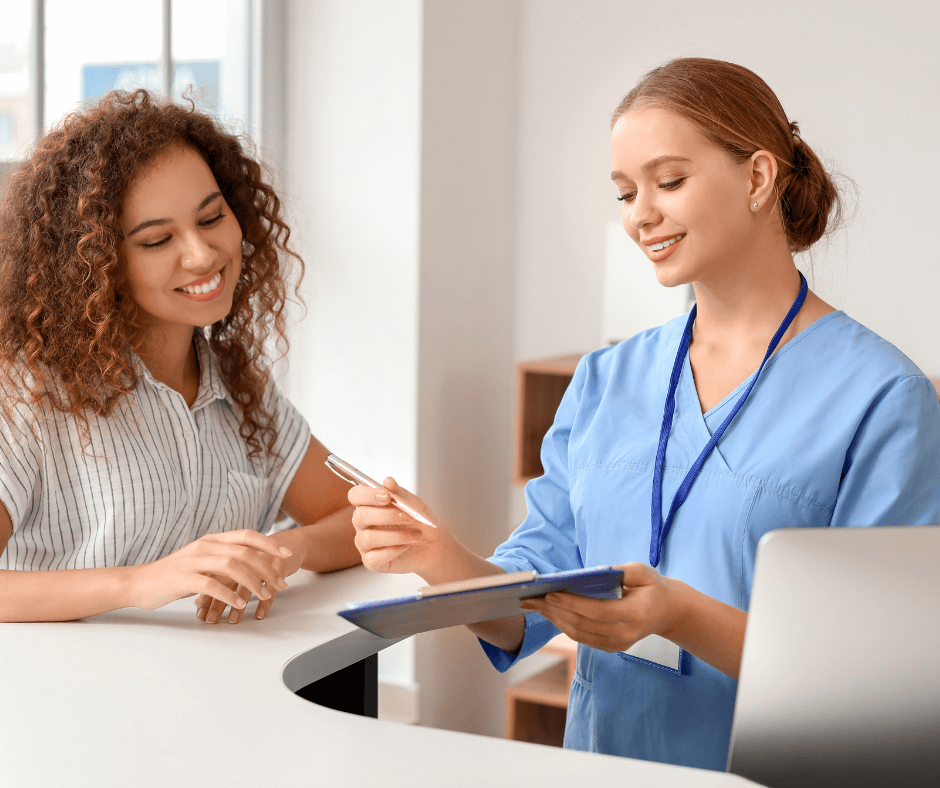Senate Demands Transparency in Medicare Advantage Denials. And what's with the Algorithms?5/18/2023 Senate Subcommittee Probes Medicare Advantage Insurers Over Coverage Denials and Profits: Demanding Transparency and Better Patient Care Explore the Senate subcommittee's deep dive into Medicare Advantage insurers' practices, their profit motives, and the impact on beneficiaries. Learn about the concerns over the use of algorithms for coverage decisions and the calls for transparency and patient-focused reform in the healthcare industry. 05/18/2023 Wednesday: On Wednesday, a Senate subcommittee asked top Medicare Advantage insurers to disclose internal documents that reveal their decision-making process for healthcare coverage. The request was made during a hearing on healthcare delays and denials under the Medicare Advantage program. The committee is concerned about the detrimental effects of these decisions on patients needing skilled nursing care. The chairman, Richard Blumenthal, said there's increasing evidence that insurers are using algorithms, instead of medical professionals, to make care denial decisions. These decisions often affect seriously ill patients who require specialized or rehabilitation care before going home. Blumenthal said that while these algorithms are described as mere tools by insurers, the repeated denials they cause cannot be ignored. He emphasized the need for transparency around these algorithms, which the insurers often label as proprietary. Blumenthal also linked the continual need for prior authorizations or premature ending of certain healthcare coverages to insurers' profit motives. He shared data indicating that Medicare Advantage plans have higher profit margins per insured person compared to other insurance markets. Letters have been sent to CVS-Aetna, United Heath, and Humana—companies that collectively cover more than half of all Medicare Advantage beneficiaries—requesting more details on their operational practices. The Department of Health and Human Services’ Office of Inspector General testified that Medicare Advantage plans' criteria should align with original Medicare. However, she pointed out the potential incentive for insurers to deny services due to the fixed payment system in Medicare Advantage. A report from last year highlighted the frequent denial of skilled nursing stays by Medicare Advantage plans, causing a decrease in stays and the length of such stays for skilled nursing providers. Witnesses discussed the issues surrounding denial of skilled nursing care, highlighting that Medicare Advantage plan holders often face a complicated process to appeal their denied coverage. Patients caught in this system often have to choose between paying out of pocket or leaving the facility against medical advice. Appeals that are eventually approved can take up to a year to be reimbursed. The hearing also examined the difficulty in controlling insurers' practices that help them manage risk. Changing these practices could lead to higher costs for the government. However, the focus of the subcommittee members seemed to be on the personal hardships caused by coverage concerns. Personal stories shared included that of a widow from Connecticut, who detailed her struggles to secure intensive therapy for her husband following the removal of a brain lesion. The emotional and financial strain of navigating the healthcare system added to the distress of dealing with her husband's health crisis. The committee's examination of Medicare Advantage's internal workings underscores the larger concerns about private insurance companies' role in managing public health benefits. It also draws attention to the long-debated issue of transparency in how these companies operate, particularly in their decision-making process for providing coverage. Given the fixed payment system in Medicare Advantage, insurance companies may have financial incentives to limit services provided to beneficiaries, leading to a conflict of interest between ensuring quality care and maintaining profitability. Testimonies and personal stories shared during the hearing highlighted this concern. They also underscored the need for reform, particularly in areas such as skilled nursing care and rehabilitation services. While these services are often crucial in recovery, they are also costly, leading to frequent denials that can delay or impede necessary treatment. The committee expressed interest in potentially legislating to improve the situation if necessary. However, the potential for increased governmental costs presents a significant obstacle, suggesting the need for a balanced approach that ensures both adequate patient care and sustainable cost management. An additional point of concern is the use of artificial intelligence and algorithms in decision-making. There's growing evidence that these tools may be contributing to systematic denials of care. While they may increase efficiency, there's a risk that they could lead to arbitrary or inappropriate denial of services, particularly if they are not overseen or understood adequately. The shift to more transparency in the Medicare Advantage plans, which now cover more than half of all Medicare beneficiaries, could result in significant changes to how these plans operate and provide coverage. However, the details of these potential changes and their impact on beneficiaries, insurance companies, and overall healthcare costs remain to be seen. As of now, the committee has put the major insurance companies on notice, seeking more information on their practices and signaling their intent to improve the system for patients who depend on Medicare Advantage for their healthcare needs. More on this news. Read here - https://www.mcknights.com/news/impossible-medicare-advantage-denials-decried-during-senate-hearing/
0 Comments
Medicare denial codes, also known as Remittance Advice Remark Codes (RARCs) and Claim Adjustment Reason Codes (CARCs), communicate why a claim was paid differently than it was billed. These codes are universal among all insurance companies. Most of the commercial insurance companies the same or similar denial codes. Pay attention to action that you need to make in order for the claims to get paid. Here are some common Medicare denial codes:
searched keywords: Medicare Denial Codes, Medicare Claims, Claims Denial, Claims Adjustment, Healthcare Providers and Medicare, Understanding Medicare Denial Codes, Medicare Claims Processing, Medicare Coverage, Responding to Medicare Denials, Medicare Claims Adjudication, Medicare Billing, Medicare Coverage Rules, Denial Codes Guide, Medicare Benefits, Medical Billing and Coding Mastering Medical Prior Authorization Appeals: A Step-by-Step Guide to Overturning Denials5/16/2023 Mastering Medical Prior Authorization Appeals: A Step-by-Step Guide to Overturning Denials Learn how to effectively appeal a medical prior authorization denial with our comprehensive guide, including tips, templates, and resources to navigate the process with ease. Are you struggling with a medical prior authorization denial? You're not alone. Many healthcare providers and patients find themselves in this frustrating situation. But don't lose hope! Our step-by-step guide will help you effectively appeal the denial and improve your chances of getting the necessary treatment or service authorized. At GoHealthcare Practice Solutions, we specialize in simplifying the complex world of medical billing and prior authorizations. Visit our website at https://www.gohealthcarellc.com for more information on our services. Step 1: Understand the Denial Reason Before you can appeal a denial, you need to understand why it was denied. The denial letter should clearly state the reason, which may include lack of medical necessity, incorrect or incomplete information, or procedural errors. If the reason is unclear, contact the insurance company for clarification. Step 2: Gather Supporting Documentation To build a strong appeal, gather all relevant medical records, clinical notes, and any additional supporting documents. This may include:
Step 3: Write a Clear and Concise Appeal Letter Compose an appeal letter that clearly explains the reason for the appeal, why the service or treatment is medically necessary, and how it aligns with the patient's health plan benefits. Use persuasive language and be sure to reference any supporting documentation. Step 4: Submit the Appeal Follow the insurance company's guidelines for submitting the appeal, which should be detailed in the denial letter. This may include submission via mail, fax, or an online portal. Make sure to keep copies of all documents and confirm receipt of your appeal. Step 5: Follow Up Regularly follow up with the insurance company to check on the status of your appeal. Be prepared to provide additional information or clarification if requested. Step 6: Escalate if Necessary If the initial appeal is denied, consider escalating the case to an external review, if applicable. This process may involve an independent third-party reviewer who will examine the case and make a determination. Step 7: Seek Professional Assistance If you're still having difficulty with the appeal process or simply need guidance, consider seeking professional assistance from a medical billing specialist or a healthcare advocate. GoHealthcare Practice Solutions offers expert services to help healthcare providers navigate the complex world of medical billing and prior authorizations. While appealing a medical prior authorization denial can be challenging, following this step-by-step guide can improve your chances of success. Always remember to be persistent, keep accurate records, and don't hesitate to seek professional help if needed. Top 10 Medical Practice Management Software to Transform Your Healthcare Facility in 2023 Discover the best medical practice management software in 2023 that can help streamline your healthcare facility's operations and improve patient care with advanced features and user-friendly interfaces. As medical practices continue to embrace technology to improve their operations and patient care, the demand for effective medical practice management software (MPM) has skyrocketed. In this blog post, we'll explore the top 10 MPM software solutions that are transforming healthcare facilities in 2023. Kareo(https://www.kareo.com) Kareo is a comprehensive and user-friendly MPM software designed for independent practices. With features such as billing, scheduling, and electronic health records (EHR) integration, Kareo streamlines your administrative tasks and enhances patient care. AdvancedMD (https://www.advancedmd.com) AdvancedMD is an all-in-one MPM software that offers robust EHR and practice management solutions. Its automation and reporting features simplify administrative tasks, allowing healthcare providers to focus on patient care. athenahealth (https://www.athenahealth.com)athenahealth is a cloud-based MPM software that offers a full suite of services, including EHR, billing, and patient engagement. Its intuitive interface and data-driven insights make it a top choice for healthcare facilities of all sizes. DrChrono (https://www.drchrono.com) DrChrono is an innovative MPM software that offers flexible, customizable solutions for EHR, medical billing, and practice management. With its mobile-first approach, DrChrono allows providers to manage their practice on the go. CareCloud (https://www.carecloud.com) CareCloud offers a user-friendly, cloud-based MPM software that helps practices improve efficiency, increase revenue, and enhance the patient experience. Its advanced analytics and reporting tools provide valuable insights for practice growth. Greenway Health (https://www.greenwayhealth.com) Greenway Health is a comprehensive MPM software that offers an integrated EHR, billing, and practice management solution. Its user-friendly interface and customizable features make it suitable for practices of all sizes. eClinicalWorks (https://www.eclinicalworks.com) eClinicalWorks provides a robust MPM software that offers EHR, practice management, and billing solutions. Its cutting-edge technology and telehealth capabilities make it a popular choice for modern healthcare practices. NextGen Healthcare (https://www.nextgen.com) NextGen Healthcare offers a powerful MPM software with integrated EHR, practice management, and billing solutions. Its wide range of features and scalable options cater to practices of all sizes and specialties. Practice Fusion (https://www.practicefusion.com)Practice Fusion is a cloud-based MPM software that provides EHR, practice management, and billing solutions in one platform. Its intuitive design and affordable pricing make it an excellent option for small to medium-sized practices. PrognoCIS (https://www.prognocis.com) PrognoCIS is a customizable MPM software that offers EHR, billing, and practice management solutions. Its seamless integration and advanced features make it a reliable choice for healthcare facilities looking to improve their operations. In conclusion, medical practice management software has become an essential tool for healthcare facilities looking to streamline their operations and improve patient care. By exploring the top 10 MPM software solutions mentioned above, you can find the perfect fit for your practice and take your facility to new heights. 10 Proven Tips for Streamlining the Medical Prior Authorization Process for Healthcare Providers5/15/2023 10 Proven Tips for Streamlining the Medical Prior Authorization Process for Healthcare Providers Learn the top 10 tips to expedite the medical prior authorization process for healthcare providers, boosting efficiency and patient satisfaction. Medical prior authorization can be a time-consuming and challenging process for healthcare providers. To help you expedite this process and improve your practice's efficiency, we've compiled a list of 10 actionable tips. Implement these strategies to streamline your medical prior authorization process and provide better care to your patients.
By implementing these tips, healthcare providers can expedite the medical prior authorization process, improve patient satisfaction, and boost practice efficiency. Healthcare Data Analytics: Unlocking Insights to Improve Patient Care Discover how healthcare data analytics can help medical professionals make informed decisions and improve patient care. Learn the benefits and best practices of data analysis in the healthcare industry. Healthcare data analytics is a growing field that uses data analysis and insights to improve patient care and medical practice management. In today's data-driven world, it's more important than ever for healthcare providers to leverage data to make informed decisions and improve patient outcomes. In this article, we will explore the benefits and best practices of healthcare data analytics. Benefits of Healthcare Data Analytics
Enhanced Risk Management: Data analytics can help identify and mitigate risks, such as medical errors, adverse events, and fraud, leading to improved patient safety. Best Practices for Healthcare Data Analytics
Healthcare data analytics has the potential to transform the healthcare industry by improving patient care, reducing costs, and enhancing resource utilization. By following best practices and using the right tools, healthcare providers can unlock insights from their data and make informed decisions. How to Successfully Appeal a Medical Prior Authorization Denial: A Guide for Providers Learn how to appeal a medical prior authorization denial with our comprehensive guide for healthcare providers. Our step-by-step instructions and tips can help you navigate the appeals process and achieve a favorable outcome for your patients. As a medical provider, you know the importance of getting timely approval for medical procedures and treatments that your patients need. However, insurance companies often require prior authorization for certain services, which can result in a denial of coverage. If you've received a medical prior authorization denial, don't worry - you have options. In this guide, we'll walk you through the steps to successfully appeal a prior authorization denial, including tips and resources to help you navigate the process with confidence. Understand the Reason for the Denial The first step in appealing a medical prior authorization denial is to understand why the request was denied. Contact the insurance company and ask for an explanation of the denial. This information can help you determine if there was a misunderstanding or miscommunication that led to the denial, or if there are other factors at play. Gather Supporting Documentation Once you understand the reason for the denial, gather any additional documentation that supports the medical necessity of the requested service or treatment. This may include medical records, test results, and a letter of medical necessity from the treating physician. Submit a Written Appeal Most insurance companies require a written appeal to be submitted within a certain timeframe. Be sure to follow the appeals process and guidelines outlined by the insurance company, and include all necessary documentation with your appeal. Follow Up After submitting your appeal, follow up with the insurance company to ensure they received it and to check on the status of the appeal. If necessary, escalate the appeal to a higher level within the insurance company or seek outside assistance from a medical billing and coding company, such as GoHealthcare Practice Solutions. Appealing a medical prior authorization denial can be a frustrating and time-consuming process, but it's important to advocate for your patients and their healthcare needs. By following the steps outlined in this guide, you can increase your chances of successfully appealing a denial and getting the coverage your patients need. Remember to stay organized, document all communication and follow-up, and don't be afraid to seek outside assistance if necessary. At GoHealthcare Practice Solutions, we offer comprehensive medical billing and coding services to help healthcare providers navigate the complex insurance landscape and achieve their revenue goals. 12 Essential Tips for Effective Medical Practice Management Discover 12 essential tips for successful medical practice management, aimed at helping you streamline operations, improve patient satisfaction, and boost your bottom line. Medical practice management is a crucial aspect of running a successful healthcare business. Efficient medical practice management not only ensures smooth operations but also enhances patient satisfaction and ultimately leads to a thriving practice. In this blog post, we'll delve into 12 essential tips that will help you optimize your medical practice management and take your practice to new heights. Invest in Efficient Medical Practice Management Software Efficient medical practice management starts with choosing the right software. A comprehensive system not only helps with billing, appointment scheduling, and record-keeping but also streamlines your overall operations. Make sure to select software that is specifically designed for medical practice management to cater to your unique needs. Prioritize Patient Satisfaction A vital part of successful medical practice management is focusing on patient satisfaction. By understanding your patients' needs and addressing their concerns promptly, you can improve their overall experience and build lasting relationships. Streamline Billing Processes An essential aspect of medical practice management is having an efficient billing process in place. By investing in a robust medical billing system, you can minimize errors, speed up claims processing, and boost your revenue. Optimize Appointment Scheduling Efficient appointment scheduling is a cornerstone of medical practice management. Utilize scheduling software that allows patients to book appointments online and sends automated reminders, thus reducing no-shows and maximizing your practice's productivity. Emphasize Staff Training Proper staff training plays a critical role in medical practice management. By ensuring your team is well-versed in the latest medical technologies, billing practices, and patient care standards, you create an environment that promotes growth and efficiency. Develop a Strong Online Presence A strong online presence is crucial for effective medical practice management in today's digital age. Make sure your practice has an up-to-date, user-friendly website and is active on relevant social media platforms to reach a wider audience and boost patient engagement. Implement Efficient Inventory Management Inventory management is a key aspect of medical practice management. By keeping track of your supplies and medical equipment, you can avoid stockouts, reduce waste, and save valuable resources. Focus on Compliance Medical practice management requires strict adherence to industry regulations and standards. Stay updated on the latest compliance requirements, and ensure your practice follows them to avoid costly fines and penalties. Foster a Positive Work Environment A positive work environment is vital for efficient medical practice management. Encourage open communication, support teamwork, and recognize your staff's achievements to boost morale and productivity. Analyze and Optimize Workflows Regularly reviewing and optimizing workflows is essential for effective medical practice management. Identify bottlenecks, eliminate redundant tasks, and implement automation where possible to streamline your operations. Collect and Leverage Patient Feedback Patient feedback is invaluable for medical practice management. Collect feedback through surveys and online reviews, and use the insights to improve your services and address patient concerns. Continuously Monitor Financial Performance Monitoring financial performance is vital for successful medical practice management. Regularly assess your practice's financial health, identify areas for improvement, and make data-driven decisions to grow your bottom line. Effective medical practice management is the foundation of a thriving healthcare business. By implementing these 12 tips, you can optimize your operations, enhance patient satisfaction, and build a successful practice that stands the test of time. Top 10 Tips to Master Patient Satisfaction Surveys for Enhanced Patient Care Unlock the true potential of patient satisfaction surveys with our top 10 tips to improve patient care and elevate your medical practice. Learn from industry experts and real-life success stories. Patient satisfaction surveys are a powerful tool to assess and improve the quality of care in medical practices. By conducting these surveys, healthcare providers can gain valuable insights into patients' experiences, identify areas for improvement, and enhance overall patient care. In this blog post, we'll explore the top 10 tips for mastering patient satisfaction surveys, backed by expert advice and real-life success stories. Set Clear Goals and Objectives Before embarking on any patient satisfaction survey project, it's essential to establish clear goals and objectives. What do you hope to achieve with your survey? Are you looking to identify areas for improvement or gauge the overall satisfaction of your patients? Establishing clear goals will help you design an effective survey and analyze the results more efficiently. Keep Your Surveys Short and Simple To increase response rates and ensure that patients are more likely to complete the survey, keep it short and simple. Limit your survey to 10-15 questions, focusing on the most critical aspects of patient care. This will also make it easier to analyze the data and make improvements. Use a Mix of Question Types Include a variety of question types in your survey, such as multiple-choice, open-ended, and rating scale questions. This will enable you to gather both quantitative and qualitative data, providing a comprehensive picture of patient satisfaction. Ensure Anonymity and Confidentiality To encourage honest feedback, assure patients that their responses will be anonymous and confidential. This will help you gather more accurate data and make patients feel more comfortable sharing their experiences. Use a Consistent Scale When using rating scale questions, maintain a consistent scale throughout the survey. This will make it easier for patients to understand and complete the survey and will simplify data analysis. Test Your Survey Before Launching Before distributing your survey to patients, test it on a small group of people to ensure that the questions are clear, unbiased, and easy to understand. This will help you make any necessary adjustments before launching the survey. Distribute Surveys Through Multiple Channels To increase response rates, distribute your survey through multiple channels, such as email, text message, and in-person. This will make it more accessible and convenient for patients to provide their feedback. Monitor and Analyze the Results Regularly monitor the results of your patient satisfaction surveys and analyze the data to identify trends and areas for improvement. Use the insights gained from the survey results to make informed decisions about enhancing patient care. Act on the Feedback After analyzing the results of your survey, take appropriate action to address any areas of concern. Communicate these changes to your patients to show that you value their feedback and are committed to improving their experience. Conduct Regular Surveys Patient satisfaction surveys should be an ongoing process. Conduct surveys regularly to track your progress and continue making improvements based on patient feedback. Patient satisfaction surveys are a vital component of any successful medical practice. By following these top 10 tips, you'll be well on your way to mastering patient satisfaction surveys and enhancing patient care. References and Sources:
Revolutionize Your Practice: Top 10 Medical Billing Software Solutions for 2023 Explore the top 10 medical billing software solutions that can revolutionize your practice, streamline your billing process, and improve your revenue cycle management in 2023. Are you a healthcare provider or administrator looking to optimize your revenue cycle management and streamline your billing process? Look no further! We have compiled a list of the top 10 medical billing software solutions that can help revolutionize your practice in 2023. From increasing efficiency to ensuring compliance, these software solutions will transform your medical billing experience. Kareo Medical Billing Software Kareo is a top choice for medical billing software, designed to cater to the unique needs of independent practices. With intuitive features and seamless integrations, Kareo simplifies medical billing and helps improve revenue cycle management. AdvancedMD Medical Billing Software AdvancedMD offers a comprehensive medical billing software solution for practices of all sizes. With robust reporting and analytics, AdvancedMD empowers users to gain insights into their billing process and make informed decisions to improve overall performance. athenaCollector by athenahealth athenaCollector is a cloud-based medical billing software that streamlines billing and collections for healthcare practices. By automating tasks and offering a suite of tools, athenaCollector helps reduce errors and boost practice revenue. DrChrono Medical Billing Software DrChrono is a powerful medical billing software that offers a user-friendly interface, customizable templates, and comprehensive billing features. This software is designed to help practices efficiently manage their billing and improve cash flow. CareCloud Medical Billing Software CareCloud is a cloud-based medical billing software that offers real-time reporting and analytics. With a focus on efficiency and compliance, CareCloud helps healthcare practices to optimize their billing process and enhance revenue cycle management. NextGen Healthcare Medical Billing Software NextGen Healthcare offers a robust medical billing software solution that integrates seamlessly with their electronic health record (EHR) system. With customizable workflows and automation, NextGen's medical billing software simplifies billing management for healthcare practices. eClinicalWorks Medical Billing Software eClinicalWorks provides a comprehensive medical billing software solution that integrates with their EHR and practice management system. With advanced features like claim scrubbing and denial management, eClinicalWorks helps practices streamline their billing process and improve revenue cycle management. Greenway Health Medical Billing Software Greenway Health's medical billing software focuses on improving practice efficiency and profitability. With features like automated claim submission and real-time eligibility verification, Greenway's medical billing software helps practices avoid errors and improve collections. NueMD Medical Billing Software NueMD offers an easy-to-use medical billing software solution designed specifically for small to medium-sized practices. With features like claim tracking, denial management, and reporting, NueMD helps practices optimize their medical billing and enhance revenue cycle management. MediTouch Medical Billing Software by HealthFusion MediTouch is a cloud-based medical billing software that offers a user-friendly interface and powerful billing features. With customizable templates and advanced analytics, MediTouch helps practices streamline their billing process and improve revenue cycle management. Choosing the right medical billing software is essential to optimizing your practice's revenue cycle management and improving overall efficiency. The top 10 medical billing software solutions mentioned above cater to various practice sizes and needs, ensuring you find the perfect fit for your healthcare practice. Explore these options to revolutionize your medical billing experience and elevate your practice to new heights in 2023. 10 TOP TELEHEALTH SOLUTIONS ELEVATING PRIMARY CARE PROVIDERS' PRACTICES Discover the top telehealth solutions that are transforming the way primary care providers deliver healthcare services to patients, enhancing accessibility, and improving outcomes. In recent years, telehealth has emerged as a key component in the healthcare sector, providing primary care providers with innovative and efficient ways to connect with patients. Telehealth solutions for primary care providers have significantly improved the delivery of care, enabling better access and convenience for both practitioners and their patients. In this blog post, we'll explore 10 top telehealth solutions that are redefining primary care services. Amwell One of the leading telehealth solutions for primary care providers, Amwell offers a comprehensive platform for delivering care remotely. With a robust suite of tools, Amwell enables virtual consultations, remote patient monitoring, and seamless integration with electronic health records (EHR). Teladoc Teladoc is a popular telehealth solution for primary care providers who are looking to offer patients on-demand access to healthcare services. With a user-friendly app and an extensive network of healthcare professionals, Teladoc makes it easy for patients to connect with primary care providers from the comfort of their own homes. MDLive Another well-known telehealth solution for primary care providers is MDLive, a platform that offers virtual visits, e-prescriptions, and behavioral health services. MDLive helps primary care providers expand their reach, offering care to patients in remote locations or those with mobility challenges. Doctor on Demand Doctor on Demand is a telehealth solution for primary care providers that focuses on delivering high-quality, video-based consultations. The platform also offers additional services such as preventive care, chronic care management, and mental health support. SnapMD SnapMD is a telehealth solution for primary care providers that offers a secure, cloud-based platform for virtual consultations. With its user-friendly interface and comprehensive features, SnapMD enables primary care providers to deliver personalized care to patients remotely. eVisit eVisit is a telehealth solution for primary care providers that focuses on simplicity and efficiency. The platform offers an easy-to-use interface for both providers and patients, enabling secure video consultations and seamless integration with EHR systems. GlobalMed GlobalMed is a telehealth solution for primary care providers that offers a wide range of services, including virtual consultations, remote patient monitoring, and telestroke care. With its focus on innovation, GlobalMed helps primary care providers improve patient outcomes and reduce healthcare costs. PlushCare PlushCare is a telehealth solution for primary care providers that offers a wide range of services, including virtual consultations, prescription management, and lab test coordination. The platform also focuses on preventive care and chronic condition management, helping primary care providers to deliver comprehensive care remotely. Chiron Health Chiron Health is a telehealth solution for primary care providers that offers a secure, cloud-based platform for virtual consultations. The platform integrates with existing EHR systems and offers features such as appointment scheduling and billing, making it an attractive option for primary care providers looking to expand their telehealth services. Spruce Health Spruce Health is a telehealth solution for primary care providers that offers secure messaging, video consultations, and care coordination tools. The platform is designed to help primary care providers streamline their workflows and improve patient engagement. These top telehealth solutions for primary care providers are transforming the way healthcare services are delivered, making it easier for practitioners to reach patients and offer high-quality care. As the healthcare landscape continues to evolve, embracing telehealth solutions will become increasingly vital for primary care providers looking to stay competitive and deliver exceptional patient experiences. A Comprehensive Guide on How to Appeal a Medical Prior Authorization Denial for Medical Providers5/9/2023 A Comprehensive Guide on How to Appeal a Medical Prior Authorization Denial for Medical Providers Learn how to effectively appeal a medical prior authorization denial as a medical provider with this comprehensive guide. Discover helpful tips and strategies to increase your chances of success. GoHealthcare Practice Solutions can also assist you in navigating the process. As a medical provider, dealing with medical prior authorization denials can be frustrating and time-consuming. However, appealing these denials is a necessary process to ensure that your patients receive the care they need. In this comprehensive guide, we will discuss the steps you can take to appeal a medical prior authorization denial effectively. We will provide you with practical tips and strategies to help you navigate the process with confidence. Step 1: Understand the Reason for Denial The first step in appealing a medical prior authorization denial is to understand the reason for the denial. Review the denial letter carefully, paying attention to the specific reason(s) for the denial. This will help you to identify the specific information or documentation needed to support your appeal. Step 2: Gather Supporting Documentation Gathering all necessary supporting documentation is crucial in the appeal process. This includes medical records, test results, and any other relevant documentation that supports the medical necessity of the procedure or treatment. Make sure to also include any additional information that was not submitted with the original prior authorization request. Step 3: Prepare a Strong Appeal Letter Crafting a compelling and well-organized appeal letter is essential in appealing a medical prior authorization denial. The appeal letter should be concise and to the point, highlighting the medical necessity of the procedure or treatment and providing evidence to support your case. It should also address the specific reason(s) for the denial and explain why the denial was incorrect. Step 4: Submit the Appeal Once you have prepared your appeal letter and gathered all necessary supporting documentation, submit your appeal according to the insurer's guidelines. Make sure to follow all submission requirements, including deadlines and required forms. You may also consider submitting the appeal via certified mail or fax to ensure that it is received. Step 5: Follow Up and Be Persistent Following up on your appeal and being persistent is crucial in ensuring a positive outcome. Keep track of all communication with the insurer and follow up regularly to ensure that your appeal is being processed. Be persistent in advocating for your patient's care and do not be afraid to escalate your appeal to a higher authority if necessary. Successfully appealing a medical prior authorization denial requires persistence, attention to detail, and an understanding of the appeal process. By following the steps outlined in this guide and seeking assistance from GoHealthcare Practice Solutions, you can increase your chances of a positive outcome for your patient's care. Remember, advocating for your patient's health is always worth the effort. Top 10 Medical Practice Staffing Solutions: How to Build the Perfect Team Discover the best medical practice staffing solutions to optimize your team and improve patient care. Explore expert recommendations for your healthcare facility today. Running a successful medical practice requires a well-coordinated team of skilled professionals. With the right medical practice staffing solutions in place, you can ensure your team is equipped to provide top-notch patient care. In this comprehensive guide, we explore the top 10 medical practice staffing solutions to help you build the perfect team. Learn how to streamline your hiring process, develop an efficient workforce, and foster a positive work environment. Partner with a Healthcare Staffing Agency Healthcare staffing agencies specialize in placing qualified medical professionals in the right roles. Partnering with a reputable agency can save time and resources while ensuring you have access to a large pool of pre-screened candidates. Leverage Locum Tenens Staffing Locum tenens staffing can fill temporary gaps in your medical practice, ensuring seamless patient care. By working with locum tenens physicians and nurses, you can maintain a flexible workforce and avoid burnout among your permanent staff. Utilize Telemedicine Solutions Telemedicine allows healthcare providers to offer remote consultations, improving patient access and reducing the need for in-person visits. Integrating telemedicine into your practice can alleviate some staffing pressures and expand your reach. Prioritize Employee Retention Reducing staff turnover is essential for maintaining a stable and efficient medical practice. Offer competitive salaries, benefits packages, and ongoing professional development opportunities to keep your team engaged and committed. Embrace Task Delegation and Automation Identify tasks that can be delegated to non-medical staff or automated through technology. This allows your clinical team to focus on patient care while improving practice efficiency. Develop a Strong Company Culture Foster a positive work environment by prioritizing employee wellness, promoting open communication, and recognizing the hard work of your team. A strong company culture attracts and retains top talent. Create a Comprehensive Onboarding Process A well-designed onboarding program helps new hires feel supported and prepared for their roles. This leads to improved job satisfaction and retention rates. Optimize the Interview Process Streamline your interview process by creating a structured system to evaluate candidates. This ensures you hire the right individuals for your practice and minimizes the risk of costly hiring mistakes. Invest in Ongoing Staff Training Continuing education and professional development opportunities keep your team up to date with the latest medical advancements and best practices, ensuring your practice remains competitive. Monitor Performance Metrics and Conduct Regular Reviews Track key performance indicators (KPIs) and conduct regular performance reviews to assess your team's strengths and weaknesses. This helps identify areas for improvement and growth, ensuring your medical practice continues to thrive. Effective medical practice staffing solutions are vital for providing the highest quality patient care. By implementing these top 10 strategies, you can optimize your workforce, improve employee satisfaction, and ensure your medical practice's ongoing success. Keep in mind that the key to successful staffing lies in a combination of proactive planning, strategic partnerships, and continuous improvement. Invest in your team and watch your medical practice flourish. 10 Effective Patient Engagement Strategies to Improve Outcomes and Grow Your Medical Practice5/8/2023 10 Effective Patient Engagement Strategies to Improve Outcomes and Grow Your Medical Practice Looking for ways to engage your patients and improve outcomes? Check out these 10 proven strategies that can help you build a successful medical practice while enhancing patient satisfaction and loyalty. Patient engagement is a critical factor in healthcare today. Engaged patients are more likely to follow their treatment plans, adhere to medications, and take an active role in their healthcare decisions. They are also more likely to report higher levels of satisfaction with their care and have better health outcomes overall. For medical professionals looking to improve patient engagement, we've compiled a list of 10 effective strategies that you can implement in your practice today. These strategies have been proven to work for practices of all sizes and specialties, and can help you build a successful medical practice while improving patient outcomes and satisfaction. Use Patient Portals Patient portals are secure online platforms that allow patients to access their health records, communicate with their healthcare providers, and manage their appointments and medications. By offering a patient portal, you can empower patients to take an active role in their healthcare and stay engaged with their care outside of the office. Conduct Regular Patient Surveys Patient surveys are a valuable tool for understanding patient needs and preferences. By regularly surveying your patients, you can gather feedback on your practice and identify areas for improvement. This can help you tailor your services to meet patient needs and improve overall patient satisfaction. Offer Online Appointment Booking Offering online appointment booking can make it easier for patients to schedule appointments and improve their overall experience with your practice. By offering this convenience, you can reduce wait times and make it more convenient for patients to access your services. Use Social Media to Connect with Patients Social media can be a powerful tool for engaging with patients and building relationships with your community. By using social media platforms like Facebook and Twitter, you can share educational resources, promote your services, and connect with patients in a more personal way. Provide Educational Resources Providing educational resources, such as handouts and brochures, can help patients better understand their conditions and treatment options. This can improve patient engagement and help patients make more informed decisions about their healthcare. Personalize Patient Care Personalizing patient care can help patients feel more valued and engaged with their healthcare. By tailoring your services to meet each patient's unique needs and preferences, you can build trust and loyalty with your patients. Offer Telemedicine Services Telemedicine services, such as video visits and remote monitoring, can help patients access care more easily and improve overall patient satisfaction. By offering these services, you can make it more convenient for patients to receive care and reduce the burden of in-person visits. Use Mobile Health Apps Mobile health apps can help patients track their health and stay engaged with their care. By recommending trusted health apps to your patients, you can encourage them to take an active role in managing their health and improve their overall health outcomes. Implement Patient Engagement Programs Patient engagement programs, such as disease management programs and patient education programs, can help patients stay engaged with their care and improve their health outcomes. By offering these programs, you can provide patients with the tools and resources they need to take control of their health. Encourage Patient Feedback Encouraging patient feedback can help you identify areas for improvement and build stronger relationships with your patients. By asking for feedback and responding to patient concerns, you can show patients that you value their opinions and are committed to providing high-quality care. Patient engagement is critical for improving outcomes and building a successful medical practice. By implementing the strategies outlined above, you can engage your patients, improve their satisfaction, and ultimately enhance their health outcomes. Remember, patient engagement is an ongoing process, and it requires a commitment to continuous improvement and a patient-centered approach to care. References:
Outsourcing Medical Billing and Coding Services: Streamlining Your Practice's Financial Operations5/8/2023 Outsourcing Medical Billing and Coding Services: Streamlining Your Practice's Financial Operations Outsourcing medical billing and coding services can save time and money for medical practices while improving accuracy and compliance. Learn more about the benefits and process of outsourcing these essential services. Medical billing and coding are crucial components of any medical practice's financial operations. However, managing these tasks in-house can be time-consuming and expensive, especially for smaller practices. Outsourcing medical billing and coding services can streamline operations and improve accuracy, compliance, and revenue cycle management. In this article, we'll explore the benefits of outsourcing medical billing and coding services, the process of finding a reliable provider, and how to ensure a successful partnership. Benefits of Outsourcing Medical Billing and Coding Services:
Finding a Reliable Medical Billing and Coding Provider:
Ensuring a Successful Partnership:
Outsourcing medical billing and coding services can be a game-changer for medical practices looking to streamline operations and improve financial performance. By following the best practices outlined in this article, practices can find a reliable and effective provider and achieve success in partnership. Maximize Your Medical Practice's Earnings with These 7 Revenue Cycle Management Services Explore 7 powerful revenue cycle management services that can significantly enhance the financial performance of your medical practice and streamline operations. Go Healthcare LLC is a leading provider of comprehensive revenue cycle management services for medical practices. By leveraging our expertise, we help healthcare providers like you maximize earnings, streamline operations, and improve patient satisfaction. In this article, we will discuss seven key revenue cycle management services that can help your medical practice achieve better financial performance. Patient Registration and Eligibility Verification One of the most critical revenue cycle management services for medical practices is efficient patient registration and eligibility verification. Go Healthcare LLC's team ensures that your patients' information is accurate and complete, while also verifying their insurance eligibility. This process minimizes errors and reduces claim denials, helping to improve your practice's revenue cycle performance. Medical Billing and Coding Accurate medical billing and coding are essential for maintaining a healthy revenue cycle. Our revenue cycle management services for medical practices include specialized professionals who are well-versed in the latest medical coding standards. This ensures that your practice submits accurate claims and receives the correct reimbursement for the services provided. Claim Submission and Tracking Submitting and tracking medical claims can be a time-consuming and complex task. Our revenue cycle management services for medical practices streamline this process by efficiently submitting claims to payers and tracking their status. This service ensures that claims are paid promptly and helps identify any potential issues that could lead to denials or delays. Denial Management One of the most frustrating aspects of revenue cycle management for medical practices is dealing with claim denials. Go Healthcare LLC's denial management service helps you identify the root causes of denials and implement corrective actions to prevent future occurrences. By proactively addressing these issues, our revenue cycle management services for medical practices can significantly improve your practice's bottom line. Payment Posting and Reconciliation Proper payment posting and reconciliation are vital to maintaining an accurate account of your practice's revenue. Our revenue cycle management services for medical practices include the meticulous posting of payments and adjustments to patient accounts. This ensures that your practice's financial records are up-to-date and accurate, allowing for better decision-making and financial management. Patient Collections Patient collections can be a sensitive topic, but they are a crucial component of revenue cycle management services for medical practices. Go Healthcare LLC handles this process with professionalism and care, ensuring that your patients fully understand their financial responsibilities while preserving the provider-patient relationship. Our team employs best practices to collect outstanding balances and improve your practice's overall revenue. Analytics and Reporting A successful revenue cycle management strategy relies on data-driven insights. Go Healthcare LLC's revenue cycle management services for medical practices include detailed analytics and reporting to help you make informed decisions about your practice's financial performance. By monitoring key performance indicators (KPIs) and identifying trends, we can help you optimize your revenue cycle and maximize your practice's earnings. By partnering with Go Healthcare LLC, your medical practice can take advantage of these seven key revenue cycle management services to boost your bottom line and improve patient satisfaction. Don't let the complexities of the revenue cycle hold your practice back - contact Go Healthcare LLC today to learn how our revenue cycle management services for medical practices can make a difference for you. Top 10 EHR Software Solutions Revolutionizing Healthcare Discover the top 10 EHR software solutions that are transforming the healthcare industry, streamlining workflows, and enhancing patient care. The healthcare industry has been undergoing a significant transformation, with Electronic Health Record (EHR) software playing a pivotal role in this change. EHR software has revolutionized the way healthcare providers manage patient information, making it easier to access, update, and share critical data. In this article, we will explore the top 10 EHR software solutions that are redefining the healthcare landscape. Epic Systems Epic is one of the most widely used EHR software systems in the United States. It offers an integrated platform that caters to both small and large healthcare organizations. This EHR software is known for its robust functionality, seamless interoperability, and user-friendly interface, making it a favorite among healthcare providers. Cerner Cerner is another leading EHR software that has been around for decades, providing healthcare organizations with a comprehensive suite of tools to manage patient information. Its EHR software is designed to improve efficiency, enhance patient care, and streamline workflows, making it a reliable choice for healthcare providers. Allscripts Allscripts EHR software is designed to deliver a seamless and connected healthcare experience. With its flexible and customizable features, Allscripts caters to a wide range of healthcare specialties and organizations. This EHR software emphasizes interoperability, allowing for easy data exchange among different healthcare providers. Meditech Meditech is a popular EHR software that has been serving the healthcare industry for over 50 years. Its EHR software is designed to adapt to the unique needs of healthcare organizations, providing a comprehensive and intuitive solution for managing patient information. Meditech's EHR software also emphasizes patient safety and care coordination. Athenahealth Athenahealth is a cloud-based EHR software that offers a range of services, including practice management, revenue cycle management, and patient engagement tools. This EHR software is known for its user-friendly interface and robust analytics capabilities, making it a popular choice for healthcare providers looking to improve their overall efficiency. eClinicalWorks eClinicalWorks is a versatile EHR software that caters to a wide range of healthcare specialties. This EHR software focuses on delivering an easy-to-use and customizable platform, allowing healthcare providers to tailor the software to their specific needs. eClinicalWorks also offers telehealth capabilities, making it a suitable option for remote patient care. Greenway Health Greenway Health's EHR software, Intergy, is designed to simplify healthcare management for both small and large practices. This EHR software offers a wide range of tools and features, including billing, scheduling, and reporting capabilities. Greenway Health's EHR software also emphasizes patient engagement and care coordination. NextGen Healthcare NextGen Healthcare's EHR software is an all-in-one solution for healthcare providers looking to streamline their practice management. With features like electronic prescribing, patient portal, and telehealth capabilities, NextGen's EHR software is designed to enhance patient care and improve overall efficiency. Practice Fusion Practice Fusion is a cloud-based EHR software that offers a comprehensive suite of tools for managing patient information. This EHR software is known for its affordability and ease of use, making it a popular choice for small practices and individual providers. Practice Fusion's EHR software also emphasizes patient engagement and care coordination. CareCloud CareCloud's EHR software is designed to help healthcare providers manage their practice more effectively. With features like patient scheduling, billing, and reporting, CareCloud's EHR software is a comprehensive solution for healthcare organizations of all sizes. This EHR software also focuses on improving patient Maximize Your Medical Experience: 7 Unbeatable Patient Portal Software Solutions Discover the top patient portal software options that can revolutionize your medical experience, streamlining communication and providing seamless access to vital health information. When it comes to managing your healthcare, convenience and accessibility are essential. Patient portal software provides a secure, user-friendly platform for managing medical information, appointments, and communication with healthcare providers. We've compiled a list of the top 7 patient portal software solutions that are transforming the way patients and providers interact, revolutionizing the medical experience. Epic MyChart: The Comprehensive Choice Epic MyChart, one of the most widely-used patient portal software systems, provides a comprehensive experience for both patients and healthcare providers. From appointment scheduling to prescription refills, Epic MyChart offers an intuitive interface that integrates seamlessly with the existing electronic health record (EHR) system. With a user-friendly mobile app, patients can easily access their medical information on the go. Cerner HealtheLife: The Connected Solution Cerner HealtheLife is a top patient portal software choice, offering a fully integrated approach to healthcare management. Patients can securely access their health records, schedule appointments, and communicate with healthcare providers, all within one platform. The connected portal also offers unique features such as health tracking and wellness resources, empowering patients to take control of their health journey. Athenahealth: The Cloud-Based Contender As a leading patient portal software, Athenahealth leverages cloud-based technology to streamline medical information management. Its user-friendly interface allows patients to easily access their health records, schedule appointments, and communicate with providers. With robust customization options, Athenahealth can adapt to the specific needs of any healthcare practice. Medfusion: The Patient-Focused Platform Medfusion prides itself on its patient-centric approach to patient portal software. With a focus on accessibility, Medfusion provides an easy-to-use platform for managing health records, appointments, and communication. In addition, the software offers telehealth capabilities, allowing patients to connect with their healthcare providers remotely, further enhancing the patient experience. Allscripts FollowMyHealth: The Interoperable Interface As a top patient portal software, Allscripts FollowMyHealth connects patients and providers across different EHR systems. The portal's interoperability ensures patients have seamless access to their health records, regardless of which EHR their provider uses. With secure messaging, appointment scheduling, and telehealth capabilities, FollowMyHealth provides a comprehensive solution for patient engagement. eClinicalWorks: The Versatile Tool eClinicalWorks offers a versatile patient portal software solution that caters to a wide range of healthcare practices. With customizable features, eClinicalWorks can adapt to the unique needs of any practice. Patients can securely access their health records, schedule appointments, and communicate with their healthcare providers, all while enjoying a user-friendly experience. Greenway Health: The Collaborative Choice Greenway Health provides a patient portal software that promotes collaboration between patients and providers. With features such as secure messaging, appointment scheduling, and prescription refills, Greenway Health makes it easy for patients to take an active role in their healthcare. The software also offers valuable patient education resources to support informed decision-making. In today's digital age, patient portal software is an essential tool for managing your healthcare experience. With a range of top solutions available, you can find the perfect platform to streamline communication and access vital health information. Whether you're looking for a comprehensive, connected, or patient-focused solution, these patient portal software options offer something for everyone. Maximizing Revenue and Efficiency: The Benefits of Outsourcing Medical Billing and Coding Services5/4/2023 Maximizing Revenue and Efficiency: The Benefits of Outsourcing Medical Billing and Coding Services Discover how outsourcing medical billing and coding services can streamline your practice's operations and boost revenue. Learn about the benefits of entrusting these critical tasks to experienced professionals. Medical billing and coding are integral components of any medical practice. Ensuring that claims are accurately coded and submitted on time can make the difference between a thriving practice and one struggling to keep the lights on. But with the complexity of today's healthcare system and the sheer volume of claims to process, many practices are turning to outsourcing as a solution. In this post, we explore the benefits of outsourcing medical billing and coding services and how it can help your practice achieve maximum revenue and efficiency.
Sources:
Understanding Medicare's Recovery Audit Contractor (RAC) Program for Accurate Healthcare Claims5/3/2023 Mastering Medicare Compliance: Navigating the Recovery Audit Contractor (RAC) Program for Accurate Healthcare Claims Explore the Recovery Audit Contractor (RAC) program, responsible for identifying and recovering improper Medicare payments in healthcare claims. Learn about the RAC process, types of improper payments, provider appeals, education initiatives, and key aspects of the program to ensure compliance and maintain Medicare integrity. Recovery Audit Contractors (RACs) are private companies contracted by the Centers for Medicare & Medicaid Services (CMS) to identify and correct improper Medicare payments. Their primary role is to review post-payment healthcare claims submitted by healthcare providers and identify any discrepancies or errors that may have led to overpayments or underpayments. RAC Program Objective The RAC program was established in response to the Medicare Modernization Act of 2003 and the Tax Relief and Health Care Act of 2006. The primary objective of the program is to ensure the integrity of the Medicare system by identifying and recovering improper payments, while also preventing future errors through provider education. RAC Process RACs utilize a combination of automated and manual review processes to examine healthcare claims. They review claims to identify potential errors, such as incorrect billing codes, duplicate payments, non-covered services, or incorrect payment amounts. a) Automated Review: RACs use software algorithms to identify billing patterns and potential errors. This process can identify high-risk claims without human intervention. b) Manual Review: When the automated review identifies a potential error or when the claim is complex, RACs perform a manual review. This involves a detailed examination of the medical record and supporting documentation by a certified medical professional. Types of Improper Payments RACs primarily focus on identifying four types of improper payments: a) Overpayments: When a healthcare provider receives more reimbursement than they are entitled to for a service. b) Underpayments: When a healthcare provider receives less reimbursement than they are entitled to for a service. c) Non-covered Services: When a healthcare provider receives reimbursement for a service that is not covered by Medicare. d) Incorrectly Coded Services: When a healthcare provider receives reimbursement for a service based on an incorrect billing code. Provider Appeals Process Healthcare providers have the right to appeal RAC determinations. The appeals process consists of five levels, allowing providers multiple opportunities to contest the decision. RACs are required to provide detailed rationale for their decisions and return any funds collected if the appeal is successful. Provider Education and Outreach RACs are responsible for educating healthcare providers on proper billing practices to prevent future errors. This includes conducting outreach programs, providing educational materials, and offering webinars to ensure providers have the necessary resources to comply with Medicare billing rules. Program Performance The RAC program has been successful in recovering billions of dollars in improper payments since its inception. It has also led to significant improvements in billing practices, contributing to the overall integrity of the Medicare system. In conclusion, Recovery Audit Contractors play a crucial role in ensuring the proper use of Medicare funds. By identifying and recovering improper payments and educating healthcare providers on correct billing practices, RACs help maintain the integrity of the Medicare system and safeguard its resources for future beneficiaries. Here are some additional important aspects of the Recovery Audit Contractor (RAC) program: Contingency Fee Structure: RACs are paid on a contingency fee basis, meaning they receive a percentage of the improper payments they recover. This fee structure incentivizes RACs to identify and recover as many improper payments as possible. However, some critics argue that this model may encourage RACs to be overly aggressive in their audits. RAC Jurisdictions: The United States is divided into several RAC regions, with each RAC responsible for a specific jurisdiction. This regional approach allows RACs to focus on the unique healthcare landscapes and trends within their respective regions, enhancing their ability to identify and recover improper payments. Look-Back Period: RACs typically review claims within a three-year look-back period, starting from the date of service. This means that healthcare providers should maintain accurate and complete records for at least three years to ensure they can adequately respond to any RAC audits. RAC Validation Contractor (RVC): The RAC Validation Contractor is an independent entity contracted by CMS to oversee the RAC program's accuracy and effectiveness. The RVC conducts independent reviews of RAC determinations, ensuring that RACs are adhering to Medicare rules and regulations and maintaining a high level of accuracy. Provider Compliance Group (PCG): The Provider Compliance Group is a CMS division responsible for coordinating all Medicare provider compliance efforts, including the RAC program. The PCG plays a crucial role in ensuring that the RAC program aligns with the overall goals and objectives of the Medicare system. Limitations on RAC Audits: To minimize the administrative burden on healthcare providers, CMS has implemented some limitations on RAC audits. For instance, RACs are subject to a limit on the number of medical records they can request from a provider within a specified period. Additionally, RACs must complete their reviews within specified timeframes to minimize disruption to providers. Continuous Program Improvement: CMS regularly evaluates and updates the RAC program to enhance its effectiveness, address stakeholder concerns, and adapt to the evolving healthcare landscape. This may include modifying audit methodologies, updating regulations, and refining the RAC program's focus areas. By understanding these additional aspects of the RAC program, healthcare providers can better navigate the audit process and ensure compliance with Medicare billing rules and regulations.  Explore the Recovery Audit Contractor (RAC) program, responsible for identifying and recovering improper Medicare payments in healthcare claims. Learn about the RAC process, types of improper payments, provider appeals, education initiatives, and key aspects of the program to ensure compliance and maintain Medicare integrity. Reading references related to the Recovery Audit Contractor (RAC) program:
Centers for Medicare & Medicaid Services. (2021). Recovery Audit Program. Retrieved from https://www.cms.gov/Research-Statistics-Data-and-Systems/Monitoring-Programs/Medicare-FFS-Compliance-Programs/Recovery-Audit-Program Centers for Medicare & Medicaid Services. (2021). Recovery Audit Program – Provider Resources. Retrieved from https://www.cms.gov/Research-Statistics-Data-and-Systems/Monitoring-Programs/Medicare-FFS-Compliance-Programs/Recovery-Audit-Program/Provider-Resources Department of Health and Human Services, Office of Inspector General. (2019). Medicare Recovery Audit Contractors and CMS’s Actions to Address Improper Payments, Referrals of Potential Fraud, and Performance. Retrieved from https://oig.hhs.gov/oas/reports/region4/41804058.asp American Medical Association. (n.d.). Recovery Audit Contractors (RAC) audits. Retrieved from https://www.ama-assn.org/practice-management/medicare/recovery-audit-contractors-rac-audits American Hospital Association. (n.d.). Recovery Audit Contractors (RACs). Retrieved from https://www.aha.org/issues/recovery-audit-contractors-racs These references provide a comprehensive overview of the RAC program, its objectives, processes, and impact on healthcare claims, as well as insights into the program's performance and related concerns. The Ultimate Guide to Telemedicine Services: Everything You Need to Know As the demand for remote healthcare increases, telemedicine services are becoming more popular. In this comprehensive guide, we explore the benefits, limitations, and best practices of telemedicine to help patients and medical professionals understand how to utilize this innovative technology. Telemedicine services have revolutionized the healthcare industry by providing patients with remote access to medical services. As the world adapts to the new normal of social distancing and remote work, the demand for telemedicine services is on the rise. In this guide, we will explore everything you need to know about telemedicine services, including their benefits, limitations, and best practices. Benefits of Telemedicine Services: Telemedicine services have numerous benefits, such as increased access to medical care, reduced costs, and improved patient outcomes. We will discuss these benefits in detail, along with how telemedicine services are helping patients with chronic illnesses and mental health issues. Limitations of Telemedicine Services: While telemedicine services have many advantages, there are also some limitations to consider. In this section, we will explore the challenges faced by medical professionals when using telemedicine services, including issues with insurance reimbursement and technological barriers. Best Practices for Telemedicine Services: To make the most of telemedicine services, it is important to understand best practices for their use. We will discuss strategies for selecting a telemedicine provider, preparing for a telemedicine visit, and ensuring privacy and security during remote consultations. Telemedicine services offer numerous benefits to patients and medical professionals alike. By providing remote access to medical care, telemedicine services are improving healthcare outcomes and reducing costs. As the world continues to adapt to new norms, telemedicine services are becoming increasingly popular. With this comprehensive guide, patients and medical professionals can understand how to utilize telemedicine services to their fullest potential. Boost Your Medical Practice's Financial Health with Revenue Cycle Management Effective revenue cycle management is vital for the financial success of your medical practice. Learn how to optimize your revenue cycle with our comprehensive guide and boost your bottom line. As a medical professional, your top priority is to provide quality care to your patients. However, running a successful medical practice also requires attention to the business side of things, including revenue cycle management. Revenue cycle management is the process of managing the financial aspects of your practice, from patient registration to billing and collections. In this comprehensive guide, we'll discuss the key elements of revenue cycle management and provide tips to help you optimize your revenue cycle and improve your financial health. Patient Registration and Eligibility Verification One of the critical steps in revenue cycle management is patient registration and eligibility verification. Accurate and timely registration can prevent billing errors and ensure that patients are eligible for coverage under their insurance plan. In addition, verifying patient eligibility before providing services can help prevent denials and reduce the risk of non-payment. Coding and Charge Capture Coding and charge capture are the next steps in the revenue cycle management process. Accurate coding ensures that claims are submitted correctly the first time, reducing the risk of denials and delays in payment. Charge capture ensures that all services provided are accurately recorded and billed for, optimizing revenue. Claims Submission and Follow-Up Submitting claims and following up on them is a crucial part of revenue cycle management. Timely and accurate claim submission can improve cash flow and reduce the risk of denials. Effective follow-up on denied or delayed claims can also help prevent revenue loss. Patient Payments and Collections Patient payments and collections are the final steps in revenue cycle management. Clear communication with patients about their financial responsibility and providing multiple payment options can improve collections and reduce bad debt. Timely and effective collections can help ensure that your practice receives the revenue it is owed. Effective revenue cycle management is essential for the financial health of your medical practice. By following the steps outlined in this guide, you can optimize your revenue cycle and improve your bottom line. Don't let revenue cycle management be an afterthought - make it a priority and reap the financial benefits. 10 Innovative Features of Pain Management EHR Systems That Are Transforming Patient Care Discover the top 10 innovative features of pain management EHR systems that are transforming patient care and enhancing medical practices' efficiency. In today's fast-paced healthcare industry, Electronic Health Record (EHR) systems are becoming increasingly essential. Specifically, pain management EHR systems have made significant strides in helping physicians and healthcare providers deliver more effective care to patients suffering from chronic pain. In this article, we'll explore the top 10 innovative features of pain management EHR systems that are transforming patient care and streamlining medical practices. Customizable Templates for Pain Management A major advantage of pain management EHR systems is the availability of customizable templates. These templates allow physicians to efficiently document patient encounters, including pain assessment, treatment plans, and progress notes. This not only saves time but also ensures accuracy and consistency in documentation. Integrated Pain Assessment Tools Pain management EHR systems often come with integrated pain assessment tools, such as the Visual Analog Scale (VAS) and the Numeric Rating Scale (NRS). These tools help clinicians quickly and accurately assess a patient's pain levels, which is crucial in determining the most appropriate treatment plan. E-Prescribing and Medication Management The e-prescribing feature in pain management EHR systems enables healthcare providers to electronically send prescriptions to pharmacies, reducing the risk of medication errors. Additionally, pain management EHR systems often have medication management capabilities, allowing physicians to track medication usage, monitor for potential drug interactions, and assess patient adherence to prescribed treatments. Secure Communication and Collaboration Tools Pain management EHR systems provide secure communication and collaboration tools, enabling healthcare providers to easily share patient information and collaborate on treatment plans. This is particularly important in pain management, where a multidisciplinary approach is often necessary to address the complexities of chronic pain. Integrated Billing and Scheduling Pain management EHR systems often include integrated billing and scheduling features, allowing medical practices to streamline their administrative processes. This reduces the risk of billing errors, ensures timely reimbursement, and enhances overall practice efficiency. Patient Portal and Engagement Tools Patient engagement is essential for successful pain management. Many pain management EHR systems now offer patient portals, enabling patients to access their health information, schedule appointments, request prescription refills, and communicate with their healthcare providers. This promotes patient involvement in their care and can improve treatment outcomes. Telemedicine Capabilities Telemedicine is becoming increasingly popular in pain management, as it allows healthcare providers to remotely monitor and manage patients' pain levels. Pain management EHR systems with telemedicine capabilities enable virtual consultations and facilitate remote access to patient data, ensuring continuity of care. Clinical Decision Support Clinical decision support (CDS) tools in pain management EHR systems provide healthcare providers with evidence-based recommendations, helping them make informed decisions about patient care. This can lead to more accurate diagnoses, better treatment plans, and improved patient outcomes. Reporting and Analytics Pain management EHR systems often include reporting and analytics tools, allowing healthcare providers to track and analyze data related to patient outcomes, treatment efficacy, and practice performance. This information can be invaluable in identifying trends, improving care delivery, and optimizing practice efficiency. Interoperability and Health Information Exchange Interoperability is crucial in the healthcare industry. Pain management EHR systems that support health information exchange (HIE) enable seamless sharing of patient data between healthcare providers, ensuring comprehensive and coordinated care for patients suffering from chronic pain. 10 Proven Patient Engagement Strategies for Improved Outcomes: A Comprehensive Guide Are you a medical professional looking for effective strategies to engage your patients and improve their outcomes? Read on for 10 proven patient engagement strategies backed by research and real-life experience. Engaging patients is vital for medical practices seeking to improve outcomes and build long-term relationships with patients. However, many medical professionals struggle to implement effective patient engagement strategies. To help you improve patient engagement and drive better outcomes, we've compiled a list of 10 proven strategies that have been tested and proven by experts in the field. Read on to learn more. Communicate Clearly and Effectively Clear and effective communication is key to patient engagement. When communicating with patients, use simple and jargon-free language, avoid medical terms that patients may not understand, and listen actively to their concerns. Patients who feel heard and understood are more likely to engage in their care and follow through on recommended treatments. Use Technology to Connect with Patients Technology has revolutionized patient engagement by providing new ways for medical professionals to connect with patients. Use online portals, mobile apps, and other digital tools to communicate with patients, share information, and engage them in their care. Educate Patients about Their Conditions Educating patients about their conditions is critical for patient engagement. Provide patients with clear and accurate information about their diagnosis, treatment options, and prognosis. Patients who are well-informed about their conditions are more likely to engage in their care and make informed decisions about their health. Involve Patients in Care Decisions Involving patients in care decisions is another effective patient engagement strategy. Provide patients with information about different treatment options, and work with them to develop a care plan that fits their needs and preferences. Provide Personalized Care Patients are more likely to engage in their care when they feel that their medical professionals understand their unique needs and preferences. Provide personalized care by taking the time to get to know your patients, addressing their concerns, and tailoring your approach to their individual needs. Offer Remote Monitoring and Telehealth Services Remote monitoring and telehealth services are increasingly popular patient engagement strategies that allow medical professionals to monitor patients' health remotely and provide care outside of traditional office settings. These services are particularly useful for patients with chronic conditions who require ongoing monitoring and support. Use Gamification to Engage Patients Gamification is an innovative patient engagement strategy that uses game-like elements to motivate patients to engage in their care. Use gamification to encourage patients to track their progress, set goals, and stay motivated to achieve better outcomes. Provide Emotional Support Patients who feel emotionally supported are more likely to engage in their care and experience better outcomes. Provide emotional support by showing empathy, validating patients' concerns, and referring them to support groups or counseling services if necessary. Collect Patient Feedback and Act on It Collecting patient feedback is critical for improving patient engagement. Use surveys and other feedback mechanisms to gather patients' perspectives on their care, and use this feedback to make improvements to your practice. Foster a Culture of Patient Engagement Finally, to improve patient engagement in your practice, you must foster a culture that values patient engagement and puts patients at the center of care. Encourage your staff to prioritize patient engagement, provide ongoing training and support, and recognize and reward staff members who excel in patient engagement. 10 Top Telehealth Solutions Elevating Primary Care Providers' Practices Discover the top telehealth solutions that are transforming the way primary care providers deliver healthcare services to patients, enhancing accessibility, and improving outcomes. In recent years, telehealth has emerged as a key component in the healthcare sector, providing primary care providers with innovative and efficient ways to connect with patients. Telehealth solutions for primary care providers have significantly improved the delivery of care, enabling better access and convenience for both practitioners and their patients. In this blog post, we'll explore 10 top telehealth solutions that are redefining primary care services. Amwell One of the leading telehealth solutions for primary care providers, Amwell offers a comprehensive platform for delivering care remotely. With a robust suite of tools, Amwell enables virtual consultations, remote patient monitoring, and seamless integration with electronic health records (EHR). Teladoc Teladoc is a popular telehealth solution for primary care providers who are looking to offer patients on-demand access to healthcare services. With a user-friendly app and an extensive network of healthcare professionals, Teladoc makes it easy for patients to connect with primary care providers from the comfort of their own homes. MDLive Another well-known telehealth solution for primary care providers is MDLive, a platform that offers virtual visits, e-prescriptions, and behavioral health services. MDLive helps primary care providers expand their reach, offering care to patients in remote locations or those with mobility challenges. Doctor on Demand Doctor on Demand is a telehealth solution for primary care providers that focuses on delivering high-quality, video-based consultations. The platform also offers additional services such as preventive care, chronic care management, and mental health support. SnapMD SnapMD is a telehealth solution for primary care providers that offers a secure, cloud-based platform for virtual consultations. With its user-friendly interface and comprehensive features, SnapMD enables primary care providers to deliver personalized care to patients remotely. eVisit eVisit is a telehealth solution for primary care providers that focuses on simplicity and efficiency. The platform offers an easy-to-use interface for both providers and patients, enabling secure video consultations and seamless integration with EHR systems. GlobalMed GlobalMed is a telehealth solution for primary care providers that offers a wide range of services, including virtual consultations, remote patient monitoring, and telestroke care. With its focus on innovation, GlobalMed helps primary care providers improve patient outcomes and reduce healthcare costs. PlushCare PlushCare is a telehealth solution for primary care providers that offers a wide range of services, including virtual consultations, prescription management, and lab test coordination. The platform also focuses on preventive care and chronic condition management, helping primary care providers to deliver comprehensive care remotely. Chiron Health Chiron Health is a telehealth solution for primary care providers that offers a secure, cloud-based platform for virtual consultations. The platform integrates with existing EHR systems and offers features such as appointment scheduling and billing, making it an attractive option for primary care providers looking to expand their telehealth services. Spruce Health Spruce Health is a telehealth solution for primary care providers that offers secure messaging, video consultations, and care coordination tools. The platform is designed to help primary care providers streamline their workflows and improve patient engagement. These top telehealth solutions for primary care providers are transforming the way healthcare services are delivered, making it easier for practitioners to reach patients and offer high-quality care. As the healthcare landscape continues to evolve, embracing telehealth solutions will become increasingly vital for primary care providers looking to stay competitive and deliver exceptional patient experiences. |

ABOUT THE AUTHOR:
Ms. Pinky Maniri-Pescasio is the Founder of GoHealthcare Consulting. She is a National Speaker on Practice Reimbursement and a Physician Advocate. She has served the Medical Practice Industry for more than 25 years as a Professional Medical Practice Consultant. search hereArchives
July 2024
Categories
All
BROWSE HERE
All
|
- About
- Leadership
- Contact Us
- Testimonials
- READ OUR BLOG
-
Let's Meet in Person
- 2023 ORTHOPEDIC VALUE BASED CARE CONFERENCE
- 2023 AAOS Annual Meeting of the American Academy of Orthopaedic Surgeons
- 2023 ASIPP 25th Annual Meeting of the American Society of Interventional Pain Management
- 2023 Becker's 20th Annual Spine, Orthopedic & Pain Management-Driven ASC Conference
- 2023 FSIPP Annual Conference by FSIPP FSPMR Florida Society Of Interventional Pain Physicians
- 2023 New York and New Jersey Pain Medicine Symposium
- Frequently Asked Questions and Answers - GoHealthcare Practice Solutions
- Readers Questions
Photos from shixart1985 (CC BY 2.0), www.ilmicrofono.it, shixart1985














































 RSS Feed
RSS Feed